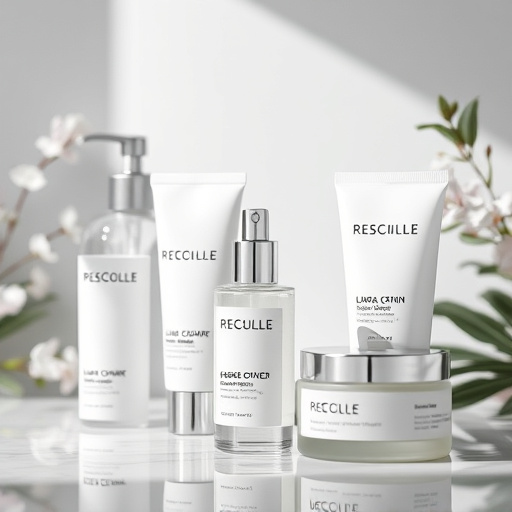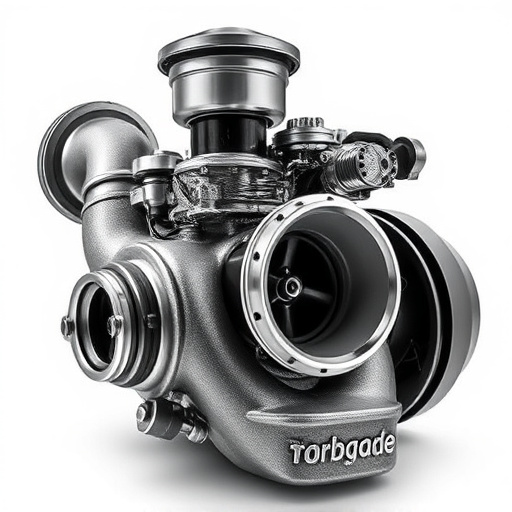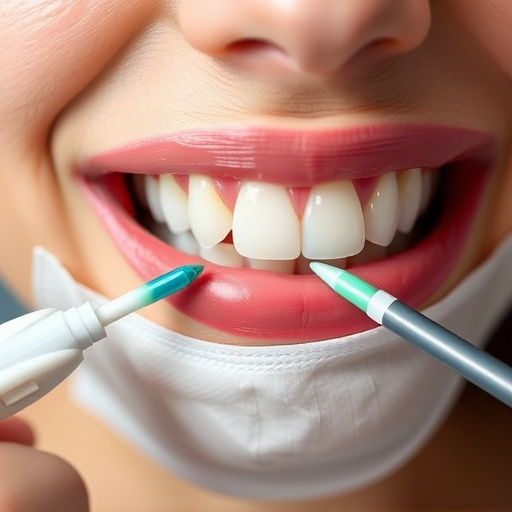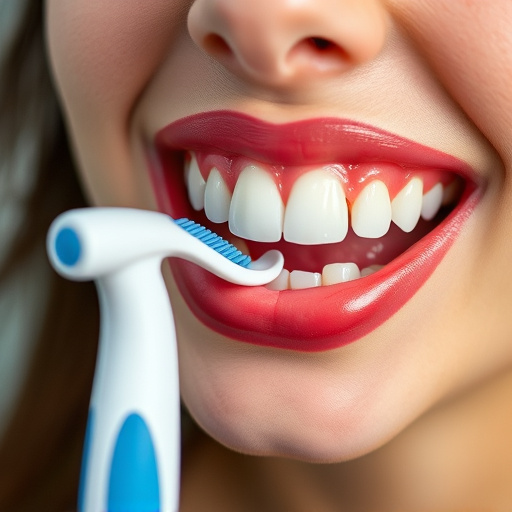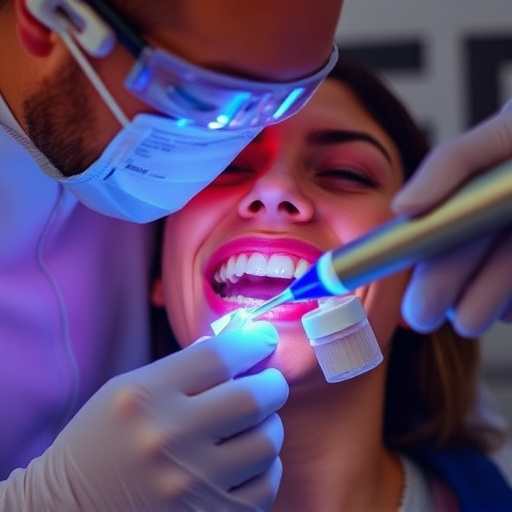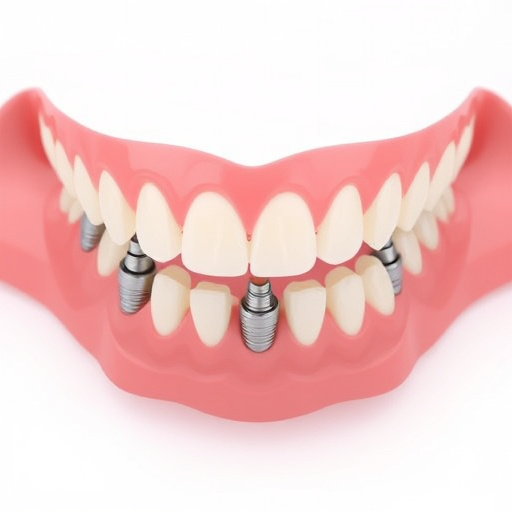The evolution of minimally invasive dentistry (MID) combines art and science, utilizing advanced technologies like lasers, digital imaging, and precise instruments. Modern dentists prioritize preserving natural tooth structures and gum tissues, shifting from aggressive to preventive treatments. These innovations enhance patient comfort, accessibility, and aesthetics, making high-quality dental care more inclusive. MID's blend of art and science improves oral health and boosts confidence, ensuring patients receive effective, gentle treatments.
“Minimally Invasive Dentistry (MID) represents a paradigm shift in oral care, combining art and science for precision treatments. This evolving field has revolutionized patient experiences by offering less traumatic procedures, faster recovery times, and aesthetically pleasing results. Driven by technological advancements, MID integrates advanced imaging and tools to create customized treatment plans.
In this article, we explore the history and evolution of MID, its key techniques, and the exciting future it holds in enhancing patient comfort, outcomes, and global oral healthcare accessibility.”
- The Evolution of Minimally Invasive Dental Practices
- – A brief history and the shift towards minimal intervention
- – Technological advancements driving the movement
The Evolution of Minimally Invasive Dental Practices
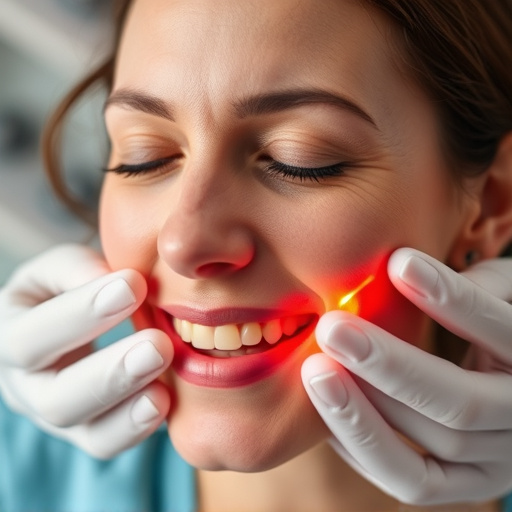
The evolution of minimally invasive dentistry is a testament to the fusion of art and science in modern healthcare. What was once considered a routine procedure often involving extensive drilling and removal of healthy tooth structures, has transformed into a more nuanced approach. Today, dental professionals are leveraging advanced technologies such as lasers, digital imaging, and precise hand instruments to offer treatments that are not only effective but also minimally disruptive to the natural tooth and gum tissues. This shift towards minimal invasiveness reflects a growing understanding of oral health as an integral part of overall wellness, with a focus on preserving the natural beauty and function of smiles.
The integration of these innovative techniques has made it possible to perform various procedures, from routine dental cleanings to complex children’s dentistry and emergency dental care, with remarkable precision and minimal discomfort. This evolution not only enhances patient experiences but also encourages individuals to prioritize their oral health, as treatments become less intimidating and more aligned with the principle of preserving natural teeth whenever possible.
– A brief history and the shift towards minimal intervention

The concept of minimally invasive dentistry (MID) has evolved significantly over time, reflecting a profound shift in oral healthcare practices. Historically, dental procedures were often more invasive, focusing on aggressive treatments like extensive drilling and extraction. However, as scientific understanding advanced and technological innovations emerged, a new paradigm took shape. Today, MID prioritizes the preservation of healthy tooth structures, embraces preventive dentistry, and leverages cutting-edge technology such as clear aligners for discreet orthodontic solutions.
This change can be attributed to several factors. Growing awareness of patient comfort and esthetics has played a pivotal role, driving demand for less disruptive procedures. Moreover, advancements in materials science and computer-aided design have enabled the development of innovative tools and techniques, like precise digital imaging and guided wisdom tooth removal. As a result, dental professionals can now offer patients effective, yet minimally invasive, options for various treatments, including preventive measures to maintain oral health and clear aligners for aesthetic corrections.
– Technological advancements driving the movement

The field of minimally invasive dentistry is undergoing a significant transformation, largely driven by rapid technological advancements. Modern tools and equipment, such as advanced lasers, digital imaging systems, and precise handpieces, allow dentists to perform procedures with unprecedented accuracy and minimal discomfort for patients. These innovations have democratized access to quality dental care, making complex treatments like dental crowns more accessible and less intimidating.
Moreover, the integration of technology has expanded the possibilities in cosmetic dentistry. Procedures like cosmetic fillings, for instance, can now be tailored to match a patient’s natural tooth color, offering both functionality and aesthetic appeal. This blend of art and science in minimally invasive dentistry ensures that patients receive not just effective treatments but also results that enhance their overall oral health and confidence.
Minimally invasive dentistry (MID) represents a significant evolution in dental care, seamlessly blending artistic expertise with scientific rigor and precision technology. By adopting advanced tools and techniques, dental professionals are now able to provide effective treatments with minimal patient discomfort and tissue damage. This approach not only enhances the overall patient experience but also promotes faster healing times and reduced long-term complications. As technological advancements continue to shape this field, MID is poised to become the norm, revolutionizing how we think about and practice dentistry.
